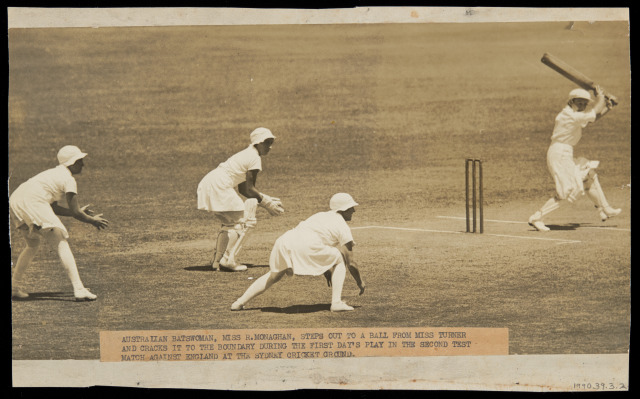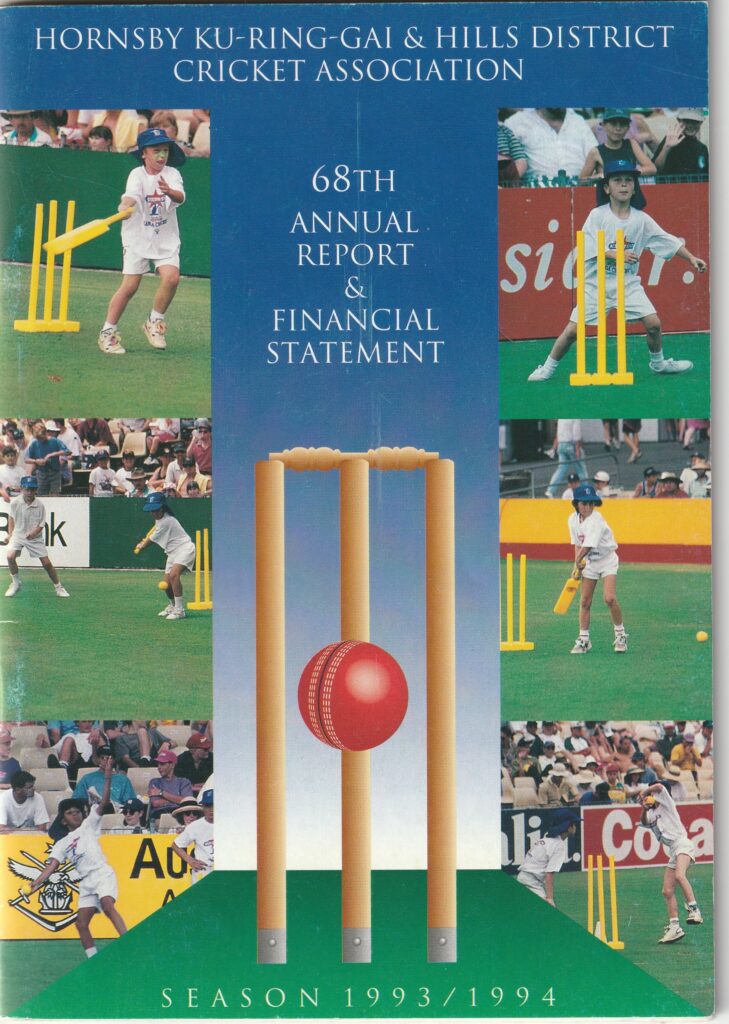Over the course of this semester, I have worked with Mount Colah Cricket Club (MCCC) to produce a history of the club for its new website. The sources of information pertaining to this small club in Sydney’s north have been scattered over its 90-year history, and it has been a rewarding journey assembling this data into a cohesive whole. This will be the first compiled history composed focussed specifically on MCCC, which means that my project will play an important role in centralising the club’s records and publicising its past successes.

Throughout this project, I have threaded through the argument that community-focused sporting organisations like MCCC provide a valuable public service in developing local talent and fostering a sense of community. The history of MCCC is a story of resilience, documenting a small club that has returned from dissolution on two separate occasions thanks to the efforts of local volunteers. Resonating throughout its history is thus a sense that the club is constituted by the Mount Colah community, which is in turn enriched by its work.
The primary evidence I use to support this argument has been the hard copy set of Hornsby Ku-ring-gai & Hills District (HK&HDCA) annual reports from its inaugural 1926-27 season to the present day. The argument that the club fosters local talent is overwhelmingly supported by the prevalence of Mount Colah players in association statistical records. Tracking such records illustrates the growth and development of MCCC players throughout their local cricketing career, as supported by the club’s coaching and curated opportunities. The argument concerning community spirit is substantiated implicitly by these reports, which include some qualitative anecdotes about MCCC, yet only in passing. Qualitative evidence of the community spirit fostered by MCCC could be sourced more efficiently within the testimony of past player and current executive member, Bruce Kimberley, whose reminiscences are scattered throughout my MCCC timeline.
One theme I tried to focus on throughout my project was the pre-eminence of women in MCCC throughout its history, and the many roles undertaken by such women over time. I first tied this theme to my argument by tracking the close association between women’s participation in cricket at a local level and changing social attitudes towards women more generally throughout the 1930s, using the 1934-35 English Women’s Test as a case study. This argument draws attention to the broader national significance of the community spaces created by such organisations as MCCC. Highlighting the social and administrative roles undertaken by women throughout the club’s history, using the examples of Lyla Rae and Joyce Edmunds, further ensures that my narrative is centred on both the community-building and competitive aspects of local cricket.

The executive committee of MCCC have expressed the necessity of recording their club history while its distinguished players from the 1970s and 80s remain involved. My project’s timing coincides with these pressing constraints, as I was able to draw from living memory in my discussion of MCCC history. My use of HK&HDCA annual reports further cements the necessity of my project for the club, as I was working with documents that present and future club members would either not have access to, or not have the time to properly consult.
Publishing my project on the MCCC website broadcasts the club’s achievements and culture in a way that could encourage community members to register and become involved. This project also serves the needs of the local community, whose faith in trusted institutions has been shaken by the COVID-19 pandemic. The story of MCCC provides a necessary reminder of the cultivated resilience of our local organisations, which have endured through the many crises of the twentieth century. The significance of my work rests on this narrative of strength, especially as it centres the many women whose efforts have been previously overlooked and under-valued.
The process of presenting my work online was challenging, as it encouraged the use of photographs to make the project more visually interesting, which were not easy to find due to the scarcity of local records. I decided to include significant detail about match and season statistics within the timeline, as I recognised that one use for the website would be for past players (or their family) to read about their achievements. This detail also serves a vital persuasive function for future registrants browsing the website, as it stresses the achievements possible when registered as a MCCC player. However, as a compromise to those seeking a more general overview, I included yellow highlighter whenever I advanced to a new season, which would allow readers to easily follow the chronology even while skimming. I also split up my timeline into seven periods, typed up “snapshot” summaries, and included thematic sections on individuals or contextual developments to further break up the detailed chronology.

My work will be accessible on the club website, which is used by curious community-members considering the organisation and present players consulting recently posted news. This website is also linked on the MCCC Facebook page, which becomes increasingly active over the summer season. While the new History pages have not yet been marketed, this could be achieved through a Facebook post once the last two decades are finalised. My choice to cut off my work at the 1999-2000 season was made by necessity, as I needed to meet the project deadline while not compromising on quality and detail. Completing 2000-2020 over the Christmas break will finalise my involvement with the club’s history at this stage. However, the sustainability of my project is ensured by my decision to use the club’s website (which future members will be able to edit and access) rather than my own platform. Furthermore, future HK&HDCA annual reports will be accessible online, ensuring that finding sources to document player performance going forward will not require the laborious consultation of physical documents. These factors all indicate the survival and continuation of my project beyond the life of this unit.
My project encompasses each page under the “History” section of the MCCC website. The statistics tables I typed up and compiled from the annual reports are included on the “Overview” page as PDF attachments.
You can check out the MCCC website here.

Emma Slee
Author of: ‘Pulling Up Stumps: History of Mount Colah Cricket Club’
Congratulations on your detailed research and historical account of the history of Mount Colah CC. It is a most worthwhile project and you should be proud of your professional work, which provides a valuable resource that can be built on in the years to come. I really enjoyed reading your thorough and interesting account of the club’s journey from the early days through to the present, and the positive impact it has on the local community.
Kind regards,
Bruce Wood
President
Coaches’ Association (HKHDCCA)